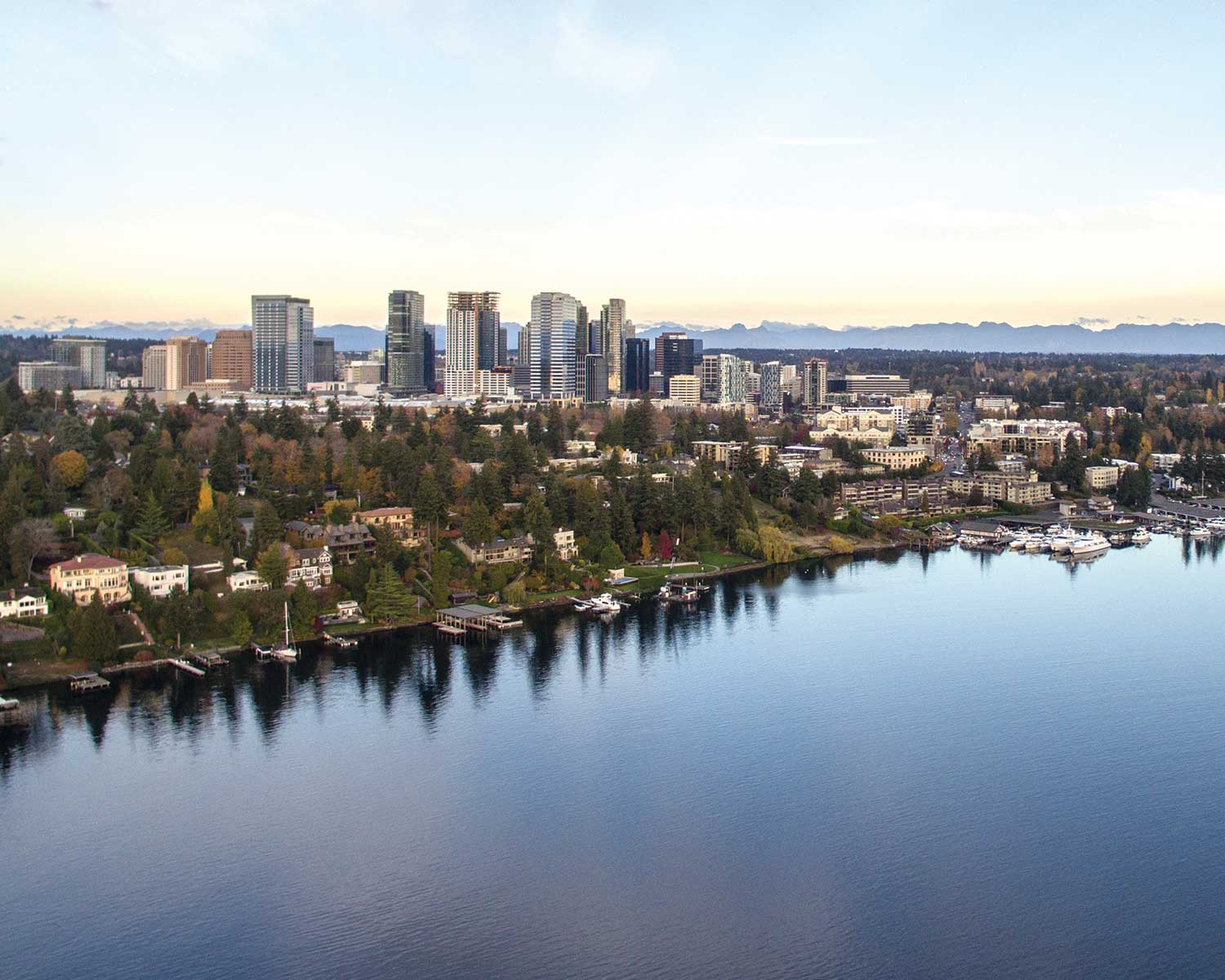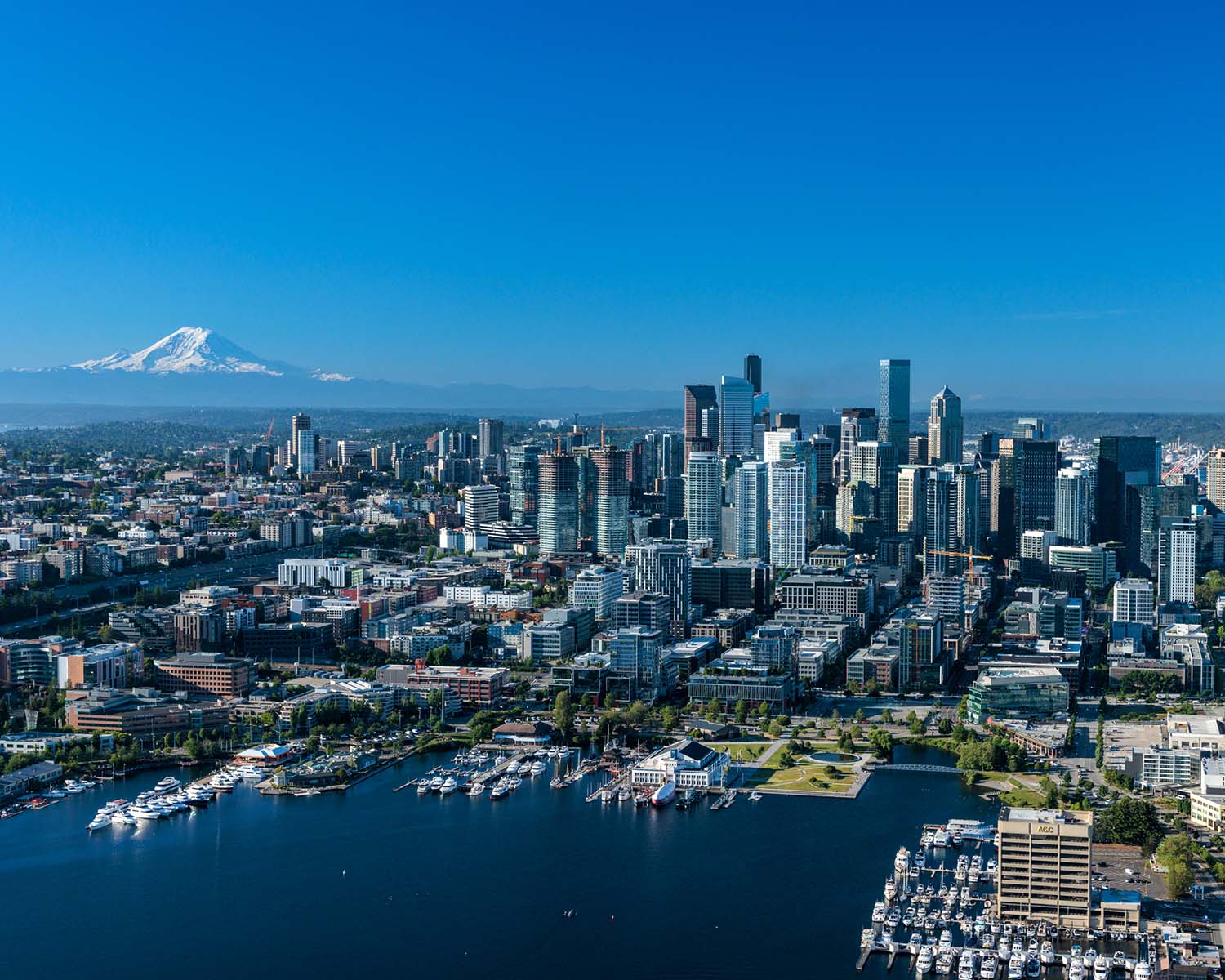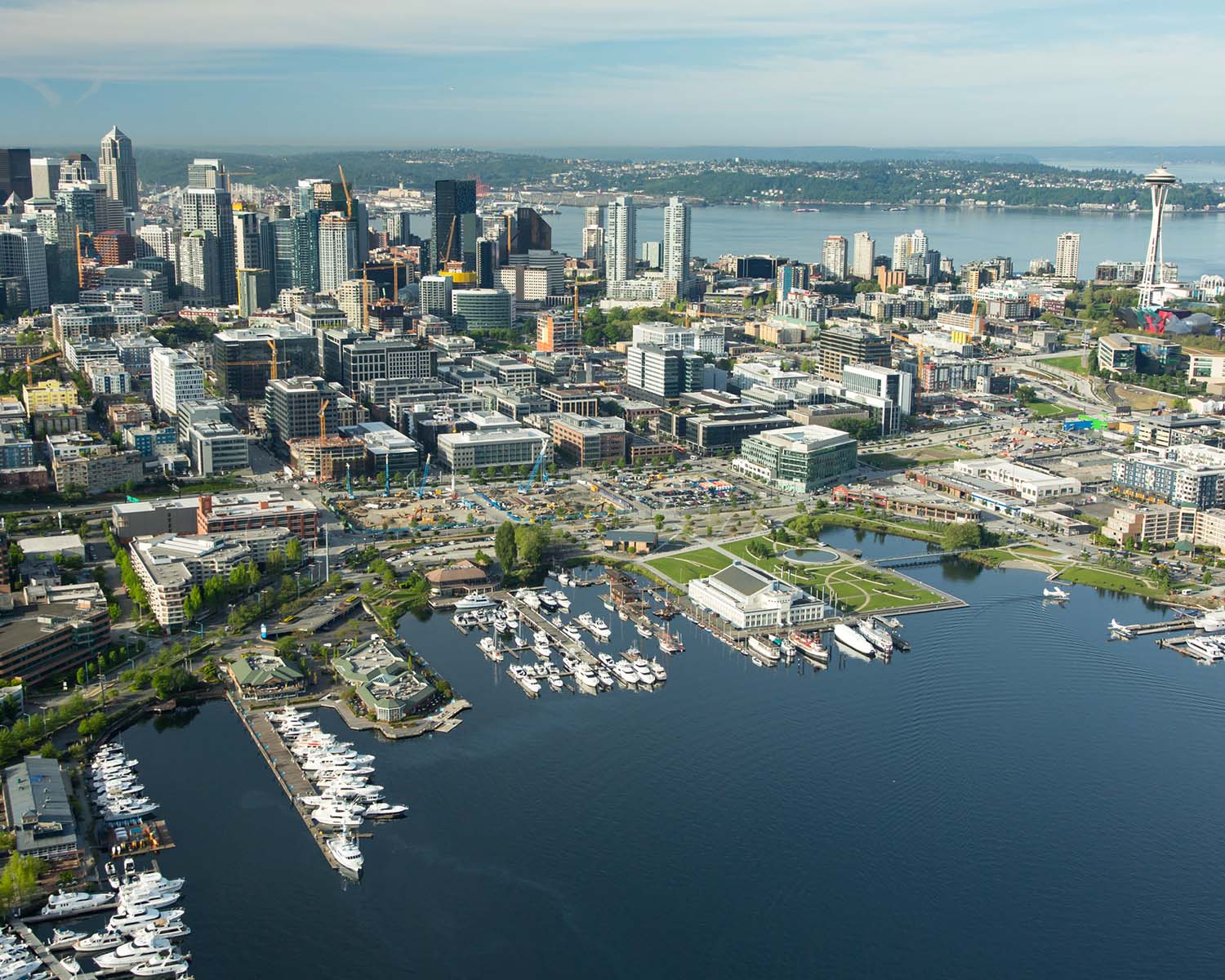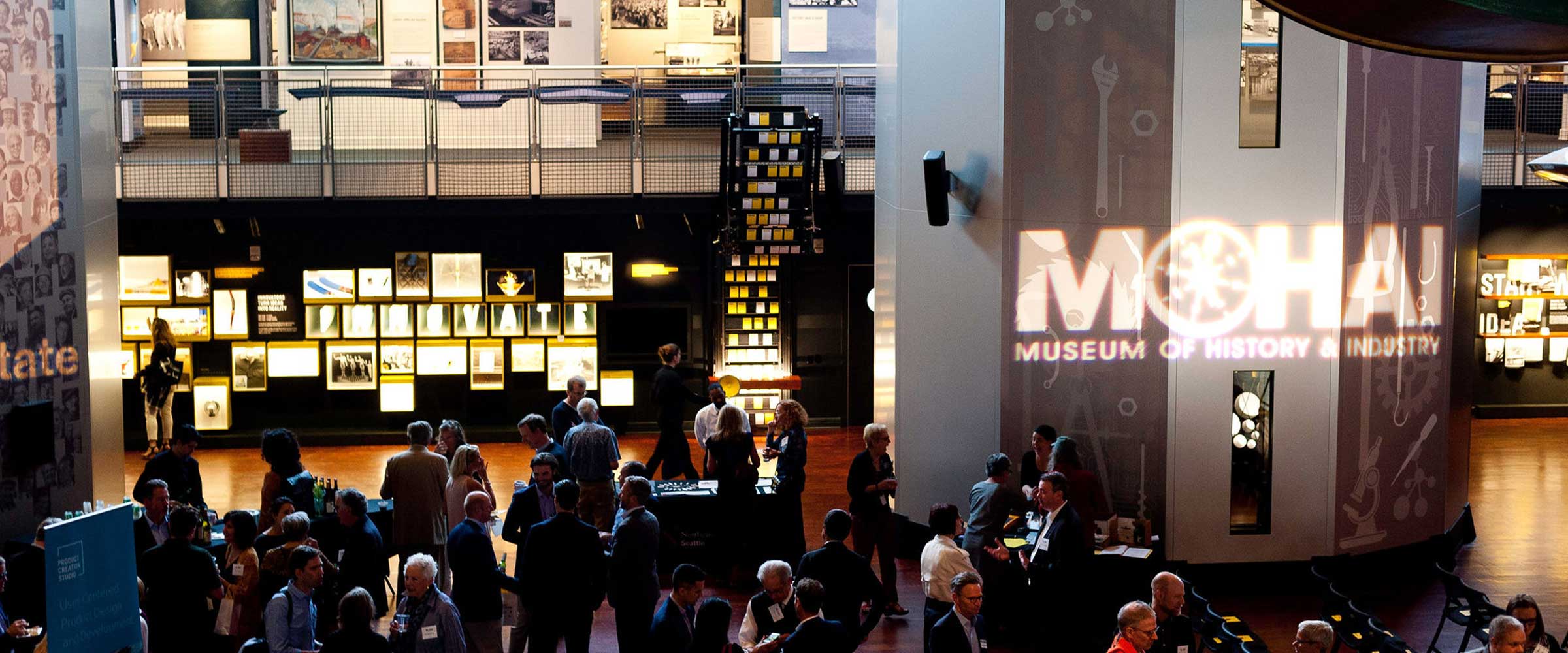
Walking through the bustling streets of South Lake Union today, it may be difficult to believe that the neighborhood was once filled with blocks of warehouses and parking lots.
The small businesses, cutting-edge life science facilities and innovative tech headquarters that now characterize South Lake Union (SLU) are part of a relatively recent transformation that began in the 1990s. Since then, over $10 billion has been invested in the area, including $740 million in infrastructure improvements, generating 50,000 permanent jobs and over $200 million in revenue for the City of Seattle.
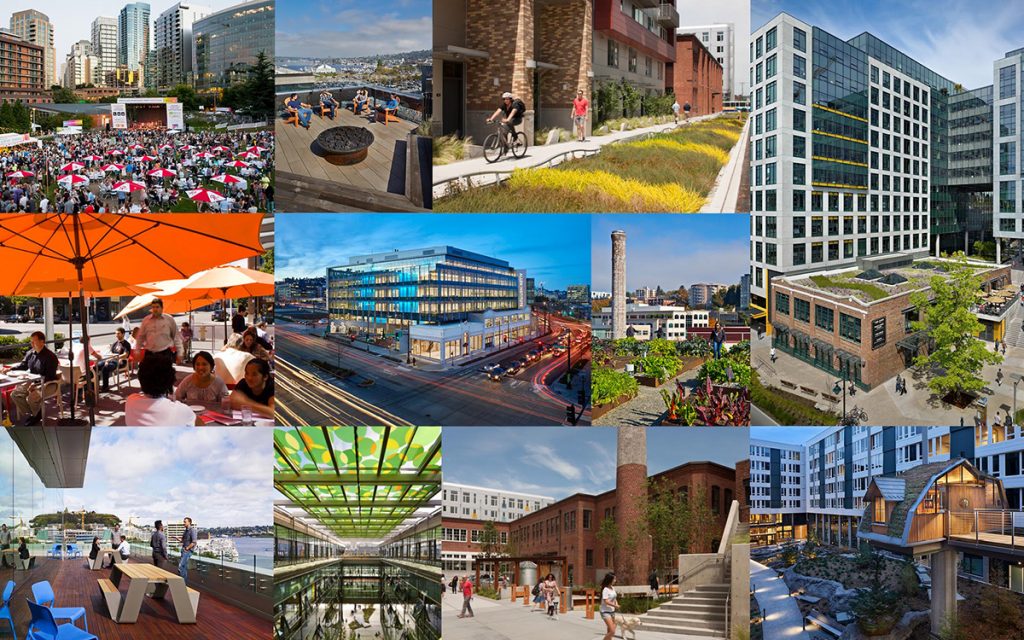
The bustling business that now characterizes South Lake Union is a fairly recent transformation
Even in today’s fast-paced world, changes of this scale, in under 30 years, are rare. So what made it possible? Last month, Ada Healey, Chief Real Estate Officer for Vulcan Real Estate, spoke to over 100 Seattle attendees at the Museum of History and Industry’s (MOHAI) Innovation Exchange about the four core elements that contributed to SLU’s success.
Shared Values
Healey recalls early pitch meetings to potential tenants in which five watercolor slides depicting the “after” vision for South Lake Union were the only visuals. Her approach in these meetings, which would become foundational to the inclusive development framework that Vulcan Real Estate uses today, was to uncover the goals that each organization had in moving to SLU. There was a lot of common ground to be found in these shared aspirations. With that unified vision, more and more stakeholders committed to making the transformation of South Lake Union a reality.
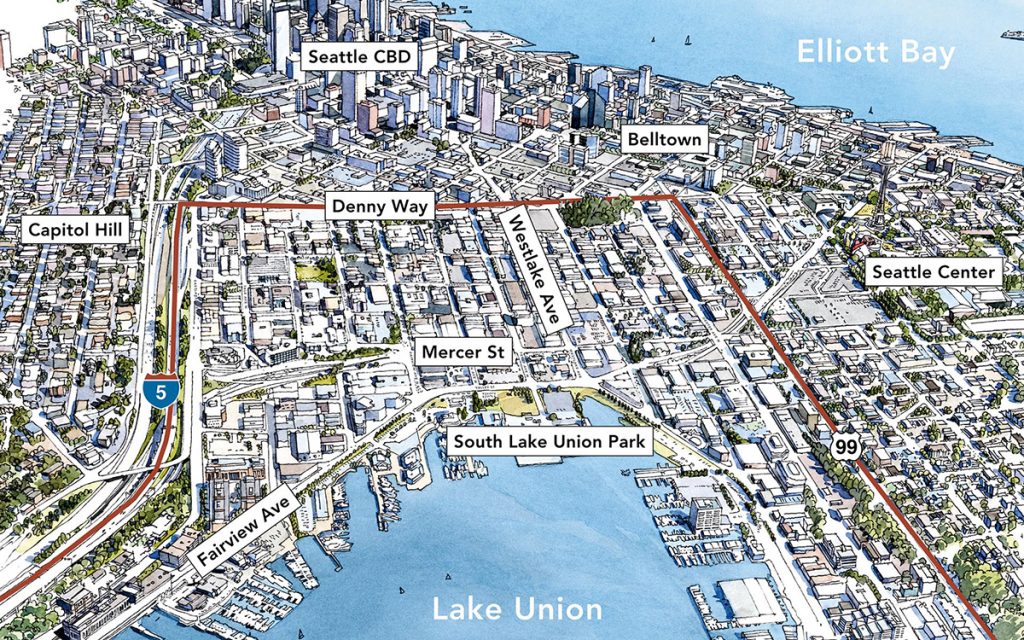
Once there was a critical mass of organizations, and infrastructure projects funded, it was easier to attract other tenants such as Google, Facebook, Nanostring and many more. Innovators want to be around other innovators because of the possibility of a cross-pollination of ideas. As a result, momentum built and the rate of progress accelerated.
In addition, neighborhood and advocacy groups came together to make important infrastructure improvements. The Mercer Corridor project illustrates this process in action. Disparate groups like the Cascade Bicycle Club, freight mobility advocates, the Uptown Alliance, the City, SLU community, and property owners joined to form the Mercer Stakeholder Group. The coalition came to consensus on a shared vision, and that unity was a launching pad for the project.
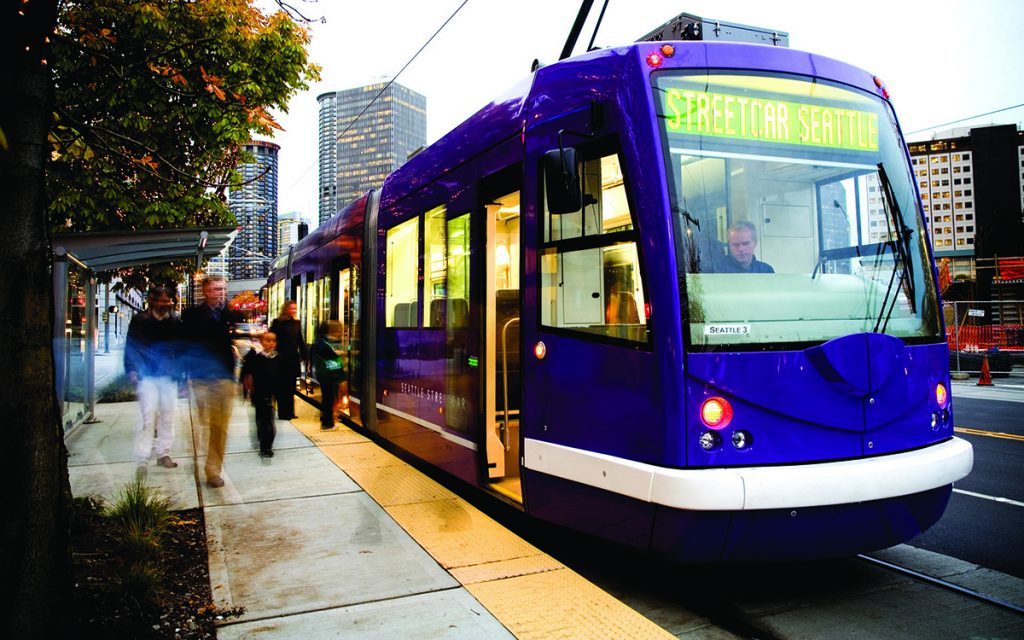
Trust Between Public and Private Sectors
South Lake Union’s evolution as a hub for innovation required consistent collaboration between elected officials, advocates and the business community. From transportation solutions to power grid improvements, the neighborhood needed major upgrades, necessitating both public and private action. Thus, collaboration and trust between these sectors became essential to SLU’s transformation.
The streetcar is a key example of the power of collaboration between the public & private sectors
Healey cited the South Lake Union streetcar, connecting the neighborhood with Seattle’s vibrant downtown, as one example of this principle in action. Vulcan Real Estate began outreach on the idea of a streetcar circulator by connecting with every property owner within two blocks of the proposed route, seeking input and informing them of the potential benefits. These efforts coalesced into the “Build the Streetcar” campaign, which hosted trips for residents and elected officials to view the success of Portland’s streetcar, and its impact on the thriving Pearl District. Eventually, the streetcar project was made possible by investments from those property owners and public funding combined, illustrating the importance of collaboration and building trust.
Taking Risks
Today, South Lake Union attracts investment from across the globe, but 30 years ago it was primarily an industrial area with potential that was only apparent to early adopters. Those organizations took significant risks on SLU’s future – and their willingness to do so was essential to its growth as a hub of innovation.
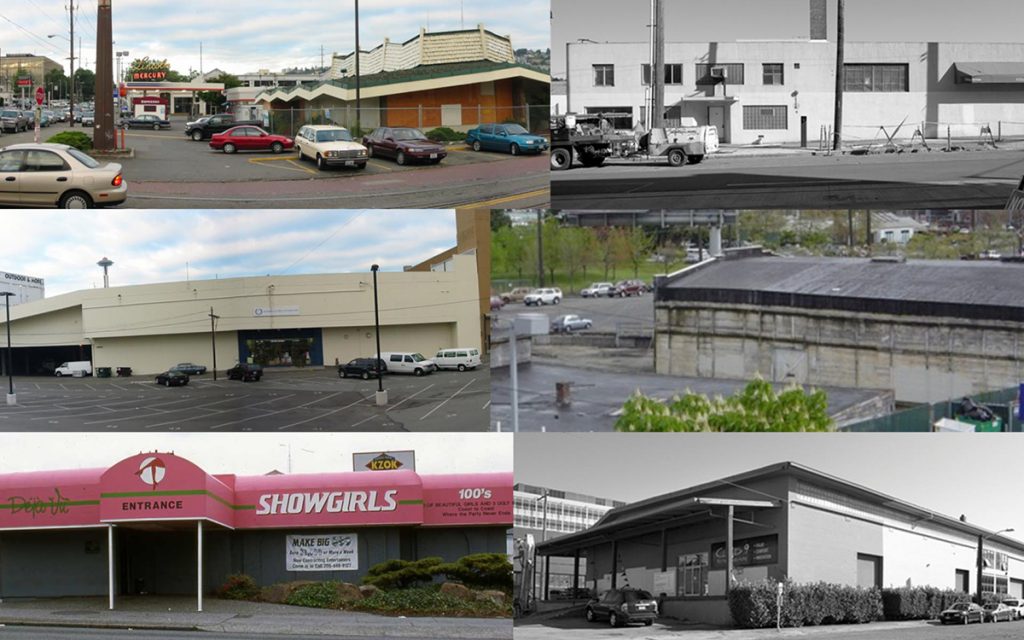
The late Paul Allen’s early investment, Healey said, is an example of this risk-taking. By acquiring 60 acres in South Lake Union, and hiring a team of real estate planning experts, Allen catalyzed the redevelopment of the area. The City also embraced risk by designing infrastructure projects before the funding path was clear.
Early adopters took significant risks to achieve their shared vision
Healey emphasized her gratitude towards the forward-thinking early adopters who took a chance on South Lake Union, including the UW School of Medicine, Fred Hutch, the Institute for Infectious Disease Research and Amazon, amongst many others.
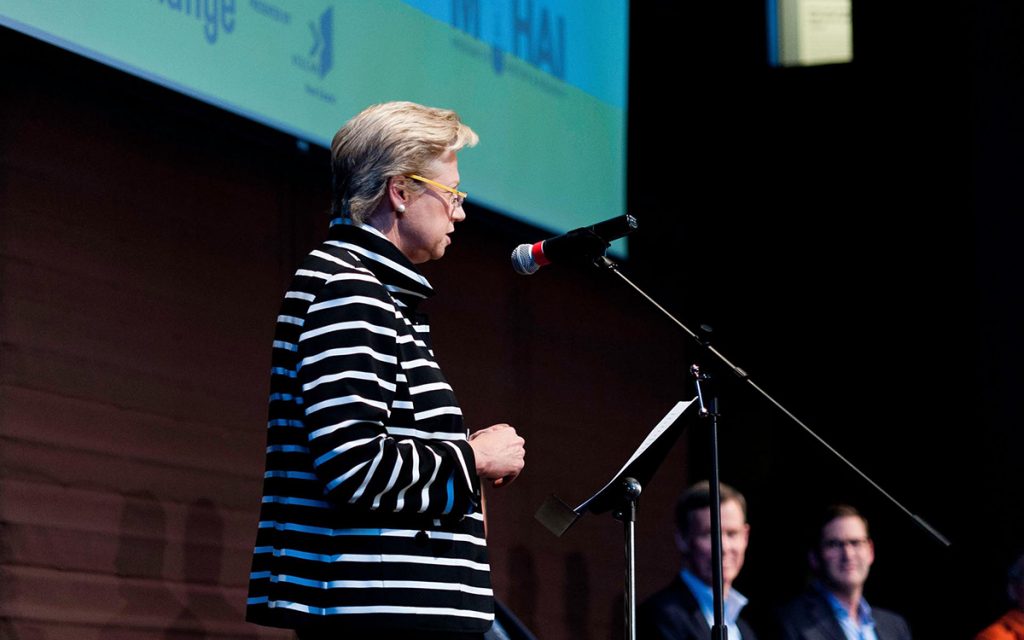
Perseverance
Finally, Healey highlighted the importance of stakeholder commitments. Progress in South Lake Union, from a vision on five watercolor slides through the development process, required follow-through from a diverse set of organizations and individuals.
Perseverance remains essential to South Lake Union’s future success
While SLU has experienced incredible transformation, this perseverance remains essential. Healey is optimistic about the future. South Lake Union has become a hub for innovation and research that is bettering the future, and there is still important work to be done.
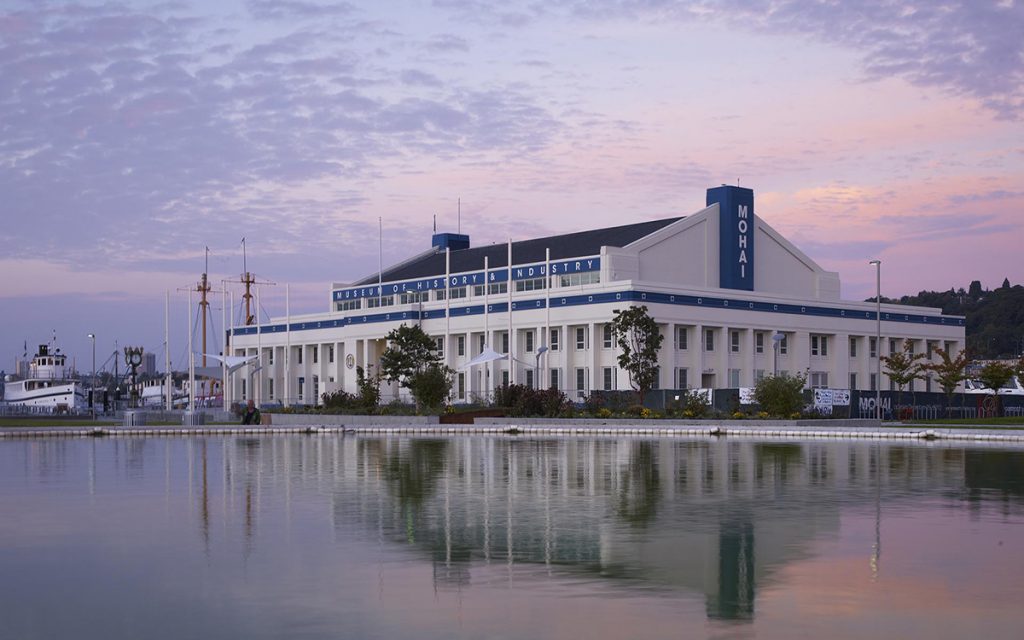
Visit the Museum of History and Industry
Rediscover history and get immersed in the lives and stories that made the Pacific Northwest the unique place it is today. MOHAI tells Seattle’s story through exhibitions and interactives. True Northwest: The Seattle Journey examines the trials and successes of Seattle’s colorful, sometimes bumpy trek from wilderness to world city. The Bezos Center for Innovation investigates Seattle’s role as a nexus of big ideas and new directions. MOHAI is respected nationally and treasured locally as a dynamic, innovative museum where historical exploration inspires people to create a better future for themselves and their communities.


